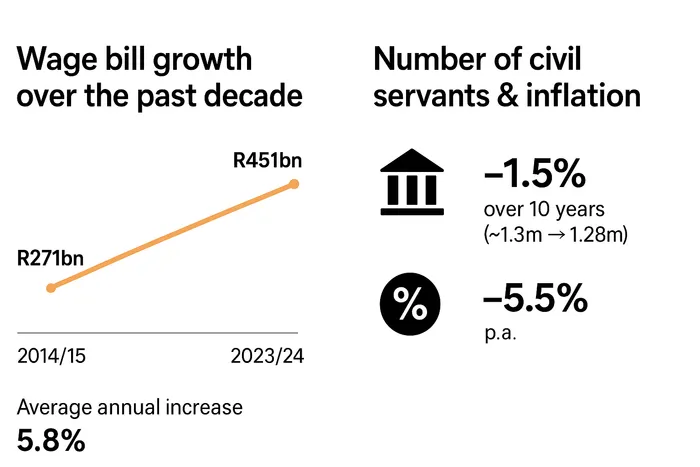Eastern Cape spent the lion’s share of its budget on salaries – Stats SA

The share of compensation of employees in total provincial expenditure has remained stable over the past decade, fluctuating narrowly between 63.9% and 64.5%.
Image: Supplied
The Eastern Cape spent the highest share of its provincial budget on salaries in the 2023/24 financial year, according to Statistics South Africa’s latest Financial statistics of provincial government report.
Across all provinces, total expenditure came to R704 billion, with R451 billion – nearly two-thirds – going to salaries.
The Eastern Cape led in the proportion of spending allocated to salaries, followed by Limpopo and the Free State, while the Western Cape and Northern Cape recorded the smallest shares.
Education and health remain the dominant cost drivers, together accounting for R561 billion, or 76% of total provincial spending.
These two sectors also employ the largest number of public servants, with more than half of the wage bill paid to teachers, education staff, nurses and doctors.
In the Eastern Cape, this large workforce is particularly critical for delivering essential services to a population that relies heavily on public education and health systems.
The Eastern Cape has a population density of about 42.8 people per square kilometre.
Compared with other South African provinces, it ranks sixth in density, with Gauteng having the highest density at around 831 people per square kilometre and the Northern Cape the lowest at about 3.6 people per square kilometre.
IOL’s research shows that, over the past decade, the number of civil servants has remained relatively stable, declining slightly by around 1.5% from 2013/14 to 2024.

A comparison of growth of the wage bill and the number of civil servants over the past decade.
Image: ChatGPT
Despite this modest change in headcount, the wage bill has increased sharply, rising from R271 billion in 2014/15 to R451 billion in 2023/24 at an average annual increase of 5.8%.
Inflation over the same period averaged about 5.5% per year, contributing to the rising cost of maintaining the public service.
Spending on goods and services grew faster at 7.4% per year, from R98 billion to R186 billion, reflecting the rising costs of running government operations.
Even with these increases, the share of compensation of employees in total provincial expenditure has remained stable over the past decade, fluctuating narrowly between 63.9% and 64.5%.
IOL